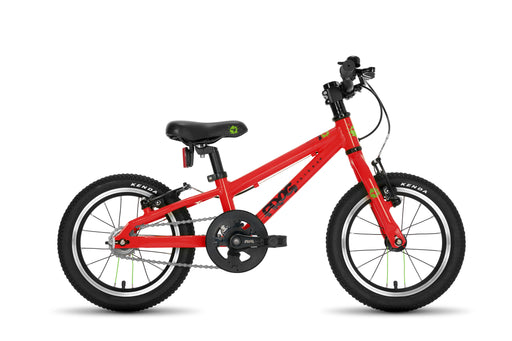Cycling is a fun activity that can be enjoyed by people of all ages. However, when it comes to cycling with kids, safety should always be the top priority. Whether you're taking your child for a leisurely ride around the neighborhood or going on a more challenging trail riding, it's important to follow some key safety tips to ensure that everyone stays safe.
Here are some essential safety tips to keep in mind when riding bikes with kids:
- Always wear helmets
One of the most important safety tips for cycling with kids is to wear a helmet. Make sure that both you and your child are wearing helmets that fit properly and are secured tightly. A helmet should cover the forehead and sit level on the head, with the straps adjusted snugly under the chin. Helmets should be replaced every few years or after any significant impact. Check our helmet fit guide to make sure your kid is wearing the appropriate helmet.
- Check your bikes
Before heading out on a bike ride with your child, make sure that both bikes are in good working condition. Check that the tires are properly inflated, the brakes are functioning correctly, and the chain is properly adjusted. If you notice any issues with the bikes, take them to a professional bike shop for repairs.
- Teach your child road safety
Teaching your child the rules of the road is essential for safe cycling. Teach your child how to use hand signals, stay in designated bike lanes, and obey traffic signals and signs. Practice safe riding habits with your child and supervise them closely in areas with heavy traffic or complex intersections.
- Wear reflective gear and lights
If you're cycling with your child in low-light conditions or at night, it's essential to wear reflective gear and lights to ensure visibility. Wear reflective clothing or attach reflective tape to your clothing or bike. Use bike lights on both your bike and your child's bike to make sure that you're visible to motorists. Check out complete light collection.
- Dress appropriately for the weather
When cycling with your child, it's important to dress appropriately for the weather. Wear breathable, lightweight clothing in the summer and layer up in the winter. Bring enough water and snacks for both you and your child, and make sure to take breaks to rest and hydrate.
- Avoid distractions
When cycling with your child, it's important to stay focused and avoid distractions. Don't text or talk on the phone while riding, and avoid listening to music or wearing headphones. Stay alert and aware of your surroundings at all times.
- Plan your route
Before heading out on a bike ride with your child, plan your route in advance. Avoid busy roads or areas with high-speed traffic, and choose routes that are suitable for your child's skill level. Consider the distance and terrain of your route and plan for breaks as needed.
- Adjust your kiddo's bike
Adjusting your child's bike to ensure that they're comfortable and in control is essential for safe cycling. Adjust the bike's seat and handlebars to ensure that your child can reach the pedals and handlebars comfortably. Make sure that the brakes are within easy reach and that the bike is the right size for your child.
- Talk to your child about potential hazards
Talk to your child about potential hazards such as potholes, debris in the road, and other obstacles. Teach your child how to safely navigate these hazards and encourage them to be alert and aware of their surroundings at all times.
- Supervise your child closely
Supervising your child closely is essential for safe cycling. Ride with your child and stay close to them at all times, particularly in areas with heavy traffic or complex intersections. Keep an eye on your child's behavior and remind them to stay focused and alert while cycling.
In conclusion, cycling with kids can be a fun and rewarding experience, but safety should always be the top priority. By following these essential











